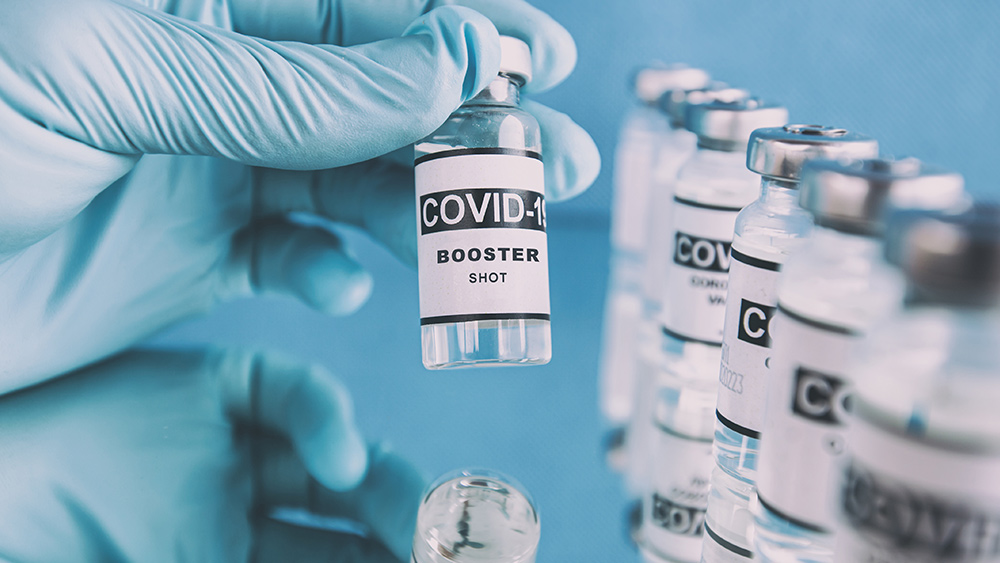Marijuana use among young people in the U.S. highest it’s been in 30 years
06/01/2018 / By Edsel Cook

Using medical cannabis to alleviate the ravages of Alzheimer’s disease or numb the pain that comes with PMS is one thing. Smoking weed everyday for kicks is another thing entirely. The number of young Americans who use marijuana on an everyday basis has reportedly reached a record high, according to an article in The Nation’s Health.
The National Institute on Drug Abuse (NIDA) released the results of its nationwide survey on September 2017. According to its survey, 7.8 percent of all college and non-college adults use marijuana at least once a day. That’s the highest it has gotten since the 1980s.
Furthermore, its Monitoring the Future survey noted that nearly 13 percent of young people who were not enrolled in college used marijuana. In comparison, only 4.9 percent of college students from the same age bracket resorted to weed.
NIDA warns that popular culture is presenting misinformation about drugs that is encouraging young people to use illicit drugs and participate in dangerous behavior. The federal agency also believes marijuana is appearing less risky to potential and current users.
In its survey, only 30 percent of the participants considered daily use of marijuana to be dangerous, the lowest rate it has gotten since 1980. And yet studies have proven that 19- to 22-year-olds who binge on recreational marijuana could suffer from weakened cognitive and physical capabilities. (Related: People who use medical cannabis are less likely to abuse opioids, research finds.)
College experiences may drive 19- to 22-year-olds to use and abuse marijuana
According to NIDA researcher Dr. John Schulenberg, young adults who perform poorly at school or fail to complete college education are more likely to abuse recreational marijuana. That’s why he believes school personnel have a vital role to play in the campaign to lower marijuana use among their students.

Schulenberg serves as the main investigator of the follow-up study for the NIDA national survey. He says the problem does not come from high schools, as the rate of marijuana use among high school seniors in the U.S. has remained steady these past few years.
Instead, he suggests that experiences in college may drive young adults to try out marijuana and other forms of risky behavior. With this in mind, school personnel could look into possible causes for these habits and address the root of the problem.
To this end, NIDA has developed a toolkit targeted at college-age young adults. Designed to raise awareness about the risks of using alcohol and drugs, the toolkit uses both easy-to-understand infographics and presents data on drug use with accompanying evidence.
Binge-drinking is still popular while smoking and vaping are in decline
The Monitoring the Future survey also looked at other illicit substances such as alcohol. According to its results, binge-drinking is still very popular among both groups of 19- to 22-year-olds.
However, college students are much more prone to binge-drinking than youths who aren’t enrolled in college. Of the two groups, 32.4 percent of college students will happily get smashed alongside their buddies, compared to 28.7 percent of non-enrolled youths.
College youths are likewise more inclined to use amphetamine stimulants such as Ritalin (2.4 percent) and Adderall (9.9 percent). Only 1.6 percent and 6.2 percent of non-college youths use Ritalin and Adderall, respectively.
Finally, fewer members of both groups are using either traditional cigarettes, the even older hookahs, or the more modern e-vaporizers.
According to NIDA, these findings demonstrate the possible effects of substance use on the health and cognition of 19- to 22-year-olds. With this information, planners could develop the appropriate campaigns to reduce the use of particular illicit substances.
If you want to know how cannabis can help people as a medicine, visit CannabisCures.news.
Sources include:
TheNationsHealth.AphaPublications.org
Submit a correction >>
Tagged Under:
Adderall, addiction, alcohol abuse, alcohol and drugs, amphetamines, binge drinking, cannabis, cigarettes, college students, drug abuse, drug addiction, drug use, hookah, illicit drugs, illicit substances, marijuana, Medical cannabis, medical marijuana, recreational marijuana, ritalin, smoking, smoking weed, stimulants, substance abuse, tobacco use, vape, vaping, young adults, young Americans
This article may contain statements that reflect the opinion of the author





















